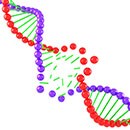Since most antioxidants are not sufficiently stable to withstand high temperatures and react sensitively to exposure to oxygen, careful preparation is necessary. In the case of the fatsoluble carotenoids and vitamin E, lipids consumed with the food facilitate uptake in the intestine. The concentration of antioxidants in foods usually decreases during storage. Appropriate storage, i.e. in a dark place or at low temperatures, delays degradation of the substances. Antioxidants intended for food supplementation are labeled with an indication of their greater bioavailability, which is guaranteed by optimal production processes.
In addition to the composition of foodstuffs containing antioxidants, the behavioral patterns of consumers – eating habits, smoking, and alcohol consumption, etc. – influence the bioavailability of antioxidants, as do individual nutritional status, age, sex and diseases. Hence the concentrations of vitamins C and E and beta-carotene in the blood of smokers are lower than those of non-smokers (3). The observed effect is likely to be due to increased utilization by prooxidants. Sex-specific differences in plasma levels have been measured for carotenoids. Diseases linked to impaired lipid absorption are also often associated with reduced uptake of fat-soluble antioxidants (4). Individual differences in the bioavailability of antioxidant micronutrients are probably due to genetic variants (polymorphisms) in proteins which are directly or indirectly involved in the absorption, distribution or metabolism of the substances. Several polymorphisms have been described for oxygenases which catalyze the splitting of beta-carotene to vitamin A (retinal). Furthermore, it has been shown that polymorphisms in genes involved in lipid metabolism influence plasma concentrations of carotenoids and vitamin E (5).
It is assumed that in the long term, imbalanced consumption of high doses of individual antioxidants will be detrimental. The antioxidant network is a multi-component system and requires a balanced mixture. In-vitro it has been shown that high concentrations of antioxidants have a prooxidant effect. The significance of prooxidant effects for a complex organism has not yet been established. In general, intervention studies with individual antioxidants or mixtures of them are needed to provide evidence of bioavailability. As a rule this is done by measuring the increase in the micronutrient in plasma. However, in many cases just the by and large undifferentiated change in overall antioxidant capacity of blood or plasma has been measured as evidence of antioxidant activity.
 In recent decades, the term ‘
In recent decades, the term ‘ Oxidative stress
Oxidative stress Bioavailability of antioxidants
Bioavailability of antioxidants Indicators of oxidative damage
Indicators of oxidative damage Effects of antioxidants
Effects of antioxidants